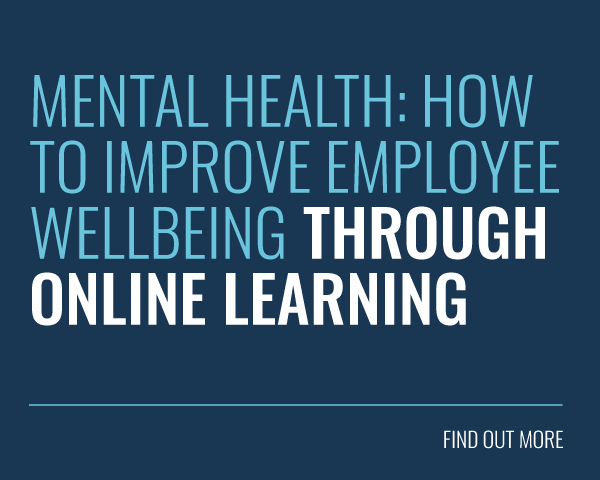In our previous article, we explored scenario-based learning, its benefits and use cases. Today, we will draw our focus further and explore how to design and implement successful scenario-based learning.
With our 9-step process, you can ensure you create well-detailed and engaging scenarios that resonate with your learner audience.
However, before we dive into the designing or implementing scenario-based learning, let’s have a little recap of what the approach is and what are the benefits.
Scenario-Based Learning: Definition and Benefits

Scenario-based training, often shortened to SBL, is a training approach where you present your learners with realistic scenarios. These scenarios enable your learners to apply their knowledge and skills in practice but in a safe, real-world-like training environment.
By simulating real-world situations, learners are better able to understand the relevance and applicability of the concepts you present them with. This, in turn, helps you to improve knowledge retention, engagement levels and learner performance.
One of the biggest benefits of scenario-based learning is that it provides a safe space for your learners to experiment and fail. As such, scenarios are extremely useful when learning about potentially risky activities.
However, SBL is not limited to that. It’s an extremely versatile approach and suits both online and face-to-face training programmes. Similarly, different scenario types make it easy to adapt SBL according to your needs and use cases.
All in all, it’s an engaging and flexible training approach that helps your learners to improve their soft skills, communication and critical thinking abilities.
Designing and Implementing Scenario-Based Learning
Designing scenario-based training involves several key steps. Once you have determined it will help you to meet your training needs and objectives, it’s time to get started!
Even though there are various different kinds of scenarios, we have outlined a 9-step process that will help you to plan, craft and implement your scenario-based training regardless of the type or use case of your scenarios.
Throughout the design process, it’s essential to keep your learner’s needs and motivations in mind and to design a scenario that is engaging and relevant but also challenging enough.
By following these steps, you can create effective scenario-based training that helps learners acquire new skills and knowledge in a practical and engaging way.
Let’s explore the process!
1. Analyse Your Audience and Their Learning Needs
To get started, you need to analyse your audience to determine what kind of scenarios you should use. After all, your scenarios need to be relevant and relatable if they are to make a difference.
Similarly, you need to understand your learners’ needs and expected gains. This will help you to create scenarios that respond to different learning requirements. After all, a single scenario can help to meet different needs depending on the actions your learners take.
You also need to consider the background, current skills and experience levels your learners have. Your scenarios need to be adequately challenging, without being impossible to complete. Your learners should have the basic skills that help them make decisions within the scenario.
2. Determine Your Approach
Once you know what skills your learners need, you should identify what kind of scenario-based learning approach suits them the best. After all, scenarios are extremely versatile and flexible training methods.
For instance, scenarios can range from simple to complex interactive sessions. You can also connect your scenarios with an overarching narrative or only create one-off scenarios.
In addition, a scenario-based training approach doesn’t mean you only provide scenarios. Instead, you can use them to complement your wider online or in-person training approach. Alternatively, you could add further training content your learners can access after completing the scenario.

3. Select Your Tools
Choosing the right tools is a critical aspect of designing effective scenario-based training. As such, once you know your objectives and your learners’ training needs, you need to focus on selecting the right tools for your training programme.
Consider the scenario you want to create. For example, determine if you wish to create a simulation, a branching scenario or a virtual reality experience. Each of these scenarios requires different technologies. In addition, choose the level of interactivity you want to incorporate into your scenario-based training.
Today’s modern learning tools often cater to scenario-based learning. For instance, some learning management systems (LMSs) allow you to create, host, and track scenario-based learning activities. Some of these tools also enable game-based learning, which can be an effective way to provide scenario-based learning.
Similarly, you can focus on implementing immersive technology, like VR and AR. This enables you to create realistic simulations of different scenarios and environments. These tools are typically more expensive.
You can also get great results with video-based scenarios that you can host on your chosen digital learning platform. By using actors and realistic scenarios, learners can experience different situations and environments.
If you’re feeling extra creative then you can link these videos to quizzes or assessments as part of a curriculum or learning pathway. Learners’ answers can then dictate the next piece of content that gets released.
Lastly, you have the option to implement scenario tools that solely focus on creating interactive scenarios. These branching scenarios enable learners to make decisions and see the consequences of their choices. This creates a more engaging and immersive learning experience.
4. Craft Your Scenario
Next up, it’s time to think through your scenario. Instructional designers suggest that there are five elements that will help to ensure your scenario is effective. These elements are called the 5Cs:
- Context: Learners need to read the situation and environmental cues they get from the scenario to guide their decision-making. As such, you need to set the scene. This needs to be a relatable and real-world-like situation that takes into account, for instance, the place, space, modernity, diversity and culture.
- Challenge: Set a problem or situation within the context that your learners will need to solve using their knowledge and skills. The challenge may include making difficult decisions or constraints like a completion time.
- Choices: Learners need to navigate through the scenario by making decisions that will lead to specific outcomes. As such, your scenario needs to include options that then branch in different directions depending on what your learners choose.
- Consequences: As your learners make decisions, the scenario should provide feedback and change accordingly. These consequences are what make scenarios an effective way to learn. After all, outcomes can be either positive or negative depending on the choice your learners make.
- Contemplate: Learners need to gain something from their learning experience. As such, you need to determine what opportunities they have to learn from the scenario. To achieve this you can use reviews, reflection questions or feedback.
As such, when creating your scenario, make sure it’s realistic and presents a relevant problem or challenge to your learners. Similarly, ensure that each action your learner takes has a direct consequence.
In addition, make sure to include various learning opportunities within the scenario. Provide detailed feedback and opportunities for reflection. After all, your learners need to understand why their decision led to the specific consequence.
5. Develop the Characters

Once you have crafted your five Cs, complement the scenario with characters! Focus on creating realistic characters who help to drive the scenario forward.
Your characters should have unique personalities, motivations and goals that align with the scenario. Ideally, use your existing data or personas to create these characters. This will ensure they are relevant and realistic.
For instance, if you are creating a scenario for sales training, your character could be a customer. As such, it’s a good idea to base your character on your typical or target customer profile.
6. Focus on Your Design Elements
Use the previous points to identify the design elements that help you to build your scenario. Your scenario needs to resonate well with your audience but also fit the context you determined earlier.
Your design becomes especially important if your scenarios have an overarching narrative or theme. After all, your design choices will help you to bring everything together into a cohesive approach.
7. Provide Detailed Feedback
To make sure your learners get in-depth takeaways from their scenario-based training, you need to incorporate detailed feedback.
You should provide feedback throughout the scenario. After all, this feedback will help your learners to understand the consequences of their decision-making.
When designing your scenario-based approach, keep in mind that your feedback can also be discrete. For example, you can use game-mechanics, such as Experience Points and Levels to subtly guide your learners. This approach is typically used in online learning.
Implementing points and levels is an excellent way to provide continuous feedback during the scenario-based learning experience. Levelling up or gaining points helps to indicate that your learners are doing a good job.
8. Test and Evaluate the Scenario
Once your scenario is ready, you need to test and evaluate how well it actually does in practice. As such, test it with a small group of learners to ensure it’s effective and helps them to achieve their learning objectives.
While conducting your pilot test, make sure your learners evaluate the content, feedback, context, designs and usability of the scenario. For example, your learners should be able to go back in the scenario as soon as they realise where they are going wrong.
Upon completion of the test run, request detailed feedback that helps you to revise and fine-tune the scenario. The goal is to create a cohesive scenario where all paths lead to a positive learning outcome.
9. Implement and Analyse Your Scenario

Once you have revised your scenario, it’s time to implement it. As such, deploy the scenario to your target audience.
However, the work doesn’t end there! Even though you have done a pilot test, you may encounter issues later on. This means that you need to continue monitoring the scenario and learning outcomes to make adjustments as needed.
Final Words
Scenario-based learning is an excellent way to create a realistic training experience in a digital environment. This means your learners can improve a wide variety of skills in a safe and supportive space.
Scenario-based learning is an experiential and autonomous approach to learning, as each action depends purely on your learners’ decisions. As such, they determine the final outcome of the scenario.
This makes it an engaging and fun approach to learning. And as we know, learner engagement is the ultimate goal of every L&D professional!
Scenario-based learning is not the only way to boost engagement. Our tip sheet shares 150 nifty learner engagement cheat codes that help you to deliver training that impacts your business. Download your copy by clicking the link below.









